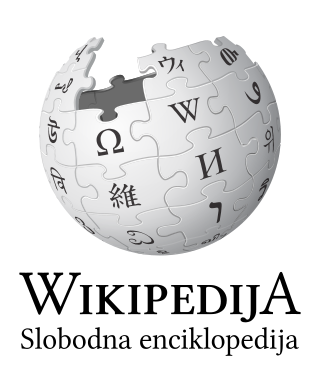
The Fox News Channel (FNC), commonly known as Fox News, is an American multinational conservative news and political commentary television channel and website based in New York City. It is owned by Fox News Media, which itself is owned by the Fox Corporation. It is the most-watched cable network in the U.S., and as of 2023 generates approximately 70% of its parent company's pre-tax profit. The channel broadcasts primarily from studios at 1211 Avenue of the Americas in Midtown Manhattan. Fox News provides a service to 86 countries and territories, with international broadcasts featuring Fox Extra segments during advertising breaks.
Media bias is the bias of journalists and news producers within the mass media in the selection of many events and stories that are reported and how they are covered. The term "media bias" implies a pervasive or widespread bias contravening of the standards of journalism, rather than the perspective of an individual journalist or article. The direction and degree of media bias in various countries is widely disputed.

Freedom House is a non-profit organization based in Washington, D.C. It is best known for political advocacy surrounding issues of democracy, political freedom, and human rights. Freedom House was founded in October 1941, with Wendell Willkie and Eleanor Roosevelt serving as its first honorary chairpersons. Its mission is to expand and defend freedom globally, and its vision is a world where all are free. Most of the organization's funding comes from the U.S. State Department and other government grants. It also receives funds from various semi-public and private foundations, as well as individual contributions.
MSNBC is an American news-based television channel and website headquartered in New York City. It is owned by NBCUniversal — a subsidiary of Comcast — and provides news coverage and political commentary. The network produces live broadcasts for its channel from studios at 30 Rockefeller Plaza in Manhattan, New York City, and aggregates its coverage and commentary on its website, msnbc.com.

The Drudge Report is a U.S.-based news aggregation website founded by Matt Drudge, and run with the help of Charles Hurt and Daniel Halper. The site was generally regarded as a conservative publication, though its ownership and political leanings have been questioned following business model changes in mid-to-late 2019. The site consists mainly of links to news stories from other outlets about politics, entertainment, and current events; it also has links to many columnists.
Claims of media bias have increased in the United States as the two-party system has become more polarized, including claims of liberal and conservative bias. " The U.S. media has come under intense scrutiny, with analysts, politicians, and even journalists themselves accusing it of bias and sensationalism". These claims generally focus on the idea of media outlets skewing information, such as reporting news in a way that conflicts with standards of professional journalism, or promoting a political agenda through entertainment media, on bias in reporting to favor the corporate owners, and on mainstream bias, a tendency of the media to focus on certain "hot" stories and ignore news of more substance. As "Americans’ concerns about media bias deepen, even as they see it as vital for democracy." A variety of watchdog groups attempt to combat bias by fact-checking biased reporting and also unfounded claims of bias. Researchers in a variety of scholarly disciplines study media bias.

The Croatian Wikipedia is the Croatian language version of Wikipedia, the free encyclopedia, started on February 16, 2003. This version has 218,353 articles and a total of 6.8 million edits have been made. It has 307,101 registered users, out of which 517 have been active in the last 30 days, and 13 administrators. Throughout 2014, fewer than two dozen editors made more than 100 edits a month; around 150 made more than 5 edits a month. Around 750 articles are ranked as featured.

Freedom in the World is a yearly survey and report by the U.S.-based non-governmental organization Freedom House that measures the degree of civil liberties and political rights in every nation and significant related and disputed territories around the world.
Rasmussen Reports is an American polling company founded in 2003. The company engages in political commentary and the collection, publication, and distribution of public opinion polling information. Rasmussen Reports conducts nightly tracking, at national and state levels, of elections, politics, current events, consumer confidence, business topics, and the United States president's job approval ratings. Surveys by the company are conducted using a combination of automated public opinion polling involving pre-recorded telephone inquiries and an online survey. The company generates revenue by selling advertising and subscriptions to its polling survey data.
In statistics, inter-rater reliability is the degree of agreement among independent observers who rate, code, or assess the same phenomenon.

Sharyl Attkisson is an American journalist and television correspondent. She hosts the Sinclair Broadcast Group TV show Full Measure with Sharyl Attkisson.
Nielsen Media Research (NMR) is an American firm that measures media audiences, including television, radio, theatre, films, and newspapers. Headquartered in New York City, it is best known for the Nielsen ratings, an audience measurement system of television viewership that for years has been the deciding factor in canceling or renewing television shows by television networks. As of May 2012, it is part of Nielsen Holdings.

Cable news channels are television networks devoted to television news broadcasts, with the name deriving from the proliferation of such networks during the 1980s with the advent of cable television.

PolitiFact.com is an American nonprofit project operated by the Poynter Institute in St. Petersburg, Florida, with offices there and in Washington, D.C. It began in 2007 as a project of the Tampa Bay Times, with reporters and editors from the newspaper and its affiliated news media partners reporting on the accuracy of statements made by elected officials, candidates, their staffs, lobbyists, interest groups and others involved in U.S. politics. Its journalists select original statements to evaluate and then publish their findings on the PolitiFact.com website, where each statement receives a "Truth-O-Meter" rating. The ratings range from "True" for statements the journalists deem as accurate to "Pants on Fire" for claims the journalists deem as "not accurate and makes a ridiculous claim".
Mainstreet Research is a Canadian market research and polling firm with headquarters in Toronto, and offices in Montreal and Ottawa. The company was founded in 2010 by Quito Maggi, who currently serves as its president.
Perceived ideological bias on Wikipedia, especially on its English-language edition, has been the subject of academic analysis and public criticism of the project. Questions relate to whether its content is biased due to the political, religious, or other ideologies its volunteer editors may adhere to. These all draw concerns as to the possible effects this may have on the encyclopedia's reliability.

Media Bias/Fact Check (MBFC) is an American website founded in 2015 by Dave M. Van Zandt. MBFC uses an explicit methodology to rate media outlets. It considers four main categories and multiple subcategories in assessing the "Political bias" and "Factual Reporting" of each source.
NewsGuard is a rating system for news and information websites. It is accessible via browser extensions and mobile apps. NewsGuard Technologies Inc., the company behind the tool, also provides services such as misinformation tracking and brand safety for advertisers, search engines, social media platforms, cybersecurity firms, and government agencies.
Our.News was a fact-checking platform that provided "nutritional labels" combining automated and user-assigned scores to rate the reliability of news articles.
AllSides Technologies Inc., is an American-based company that estimates the perceived political bias of content on online written news outlets, and then presents different versions of similar news stories from sources AllSides rates as being on the political right, left, and center, with a mission to show readers news outside their filter bubble and expose media bias. AllSides is the brainchild of John Gable who has been the company's CEO and primary owner since its first iteration.











